Background Intro
Welcome to our blog, where we embark on a journey to bid farewell to thinning hair and embrace a fuller, healthier mane! If you've been troubled by the sight of your thinning locks, fret not, for we have a treasure trove of effective strategies to share with you. Get ready to transform your hair and boost your confidence with our simple and complete guide. Let's begin the journey together!
What is the Hair Rrowth Cycle Like?
The hair growth cycle, also known as the hair cycle, is the natural process by which hair grows, rests, sheds, and regrows. It is a continuous and dynamic sequence of events that occurs in hair follicles, the small cavities within the skin where individual hair strands originate. The hair growth cycle consists of three main phases:
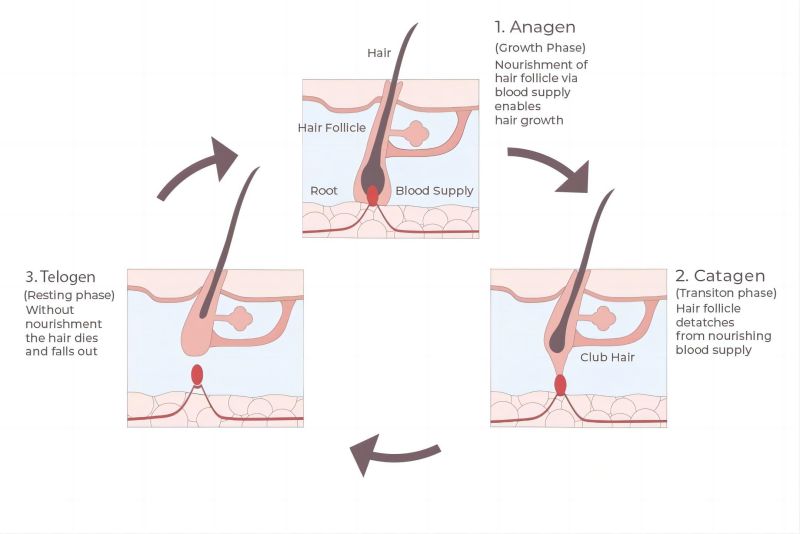
- Anagen Phase.This is when your hair is actively growing from the follicle. It can last for a few years and determines how long your hair can get.
- Catagen Phase. The follicle enters a short transition phase. The hair stops growing during this time, and the follicle starts to shrink.
- Telogen Phase. In this phase, the follicle remains dormant for a couple of months. The old hair falls out, and a new hair begins to form beneath it.
After the telogen phase, the hair strand eventually falls out, and the cycle starts again with the growth of a new hair strand in the anagen phase. Different hairs on the scalp may be at different stages of the growth cycle at any given time.
Which are the Early Signs of Thinning Hair?
Recognizing the early signs of thinning hair is essential so that proactive measures can be taken to address the issue. Here are some early signs of thinning hair to look out for:
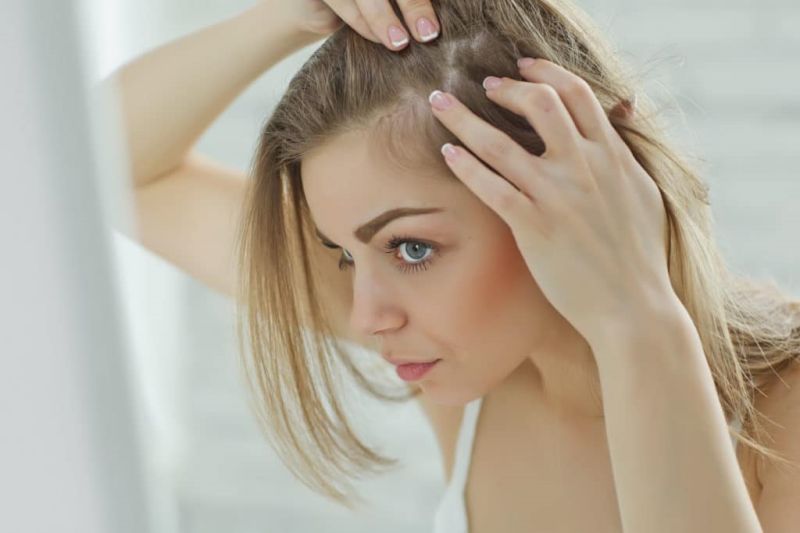
- Increased hair shedding. Finding more hair strands than usual in your brush, on the pillow, or in the shower drain may indicate hair thinning.
- Widening part line. A wider part in your hair or increased visibility of the scalp through the hair could suggest thinning in that area.
- Receding hairline. Men may notice a receding hairline, forming an "M" shape, which is a common early sign of male pattern baldness.
- Thinner ponytail. If your ponytail feels thinner and less voluminous than before, it might be a sign of hair thinning.
- Miniaturization. When individual hair strands become finer and weaker over time, resulting in shorter and thinner hairs in previously dense areas.
- More scalp visibility. Increased ease in seeing your scalp through your hair, especially in well-lit areas, may indicate thinning hair.
- Itchy or sensitive scalp. Thinning hair can come with an itchy or sensitive scalp due to inflammation or underlying scalp issues.
- Slower hair growth. Hair appearing to grow slower than usual or stalled growth may be a sign of hair thinning.
Early detection and intervention can lead to better outcomes in managing and treating thinning hair. Various factors can contribute to hair thinning, and identifying the underlying cause is crucial in developing an appropriate treatment plan.
Why do You Have Thinning Hair?
Hair thinning can be caused by a combination of various factors, both internal and external. Understanding the underlying causes of hair thinning is essential for effectively addressing the issue. Here are some common causes of hair thinning:
Cause #1: Genetics (Androgenetic Alopecia)
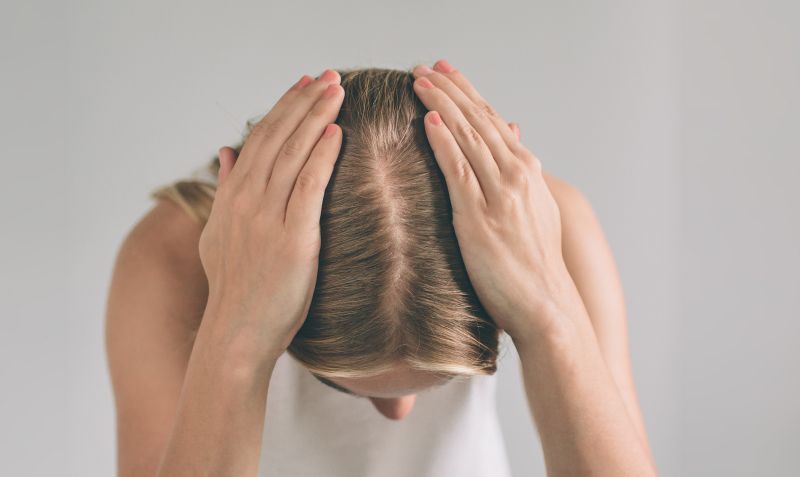
Androgenetic alopecia is the most prevalent cause of hair thinning, affecting both men and women. It is primarily determined by genetics and hormonal influences. In men, this condition often starts with a receding hairline and thinning at the crown, eventually leading to partial or complete baldness. In women, androgenetic alopecia causes diffuse hair thinning over the top of the scalp while preserving the frontal hairline.
Cause #2: Hormonal Changes

Hormonal fluctuations can have a significant impact on hair growth and can lead to hair thinning. For example, hormonal imbalances, such as those that occur during menopause or puberty, can affect the hair growth cycle and result in hair loss. In some cases, conditions like polycystic ovary syndrome (PCOS) can also cause hormonal imbalances that contribute to hair thinning.
Related: Postpartum Hair Loss Survival Guide: Regain Your Luscious Mane
Cause #3: Age
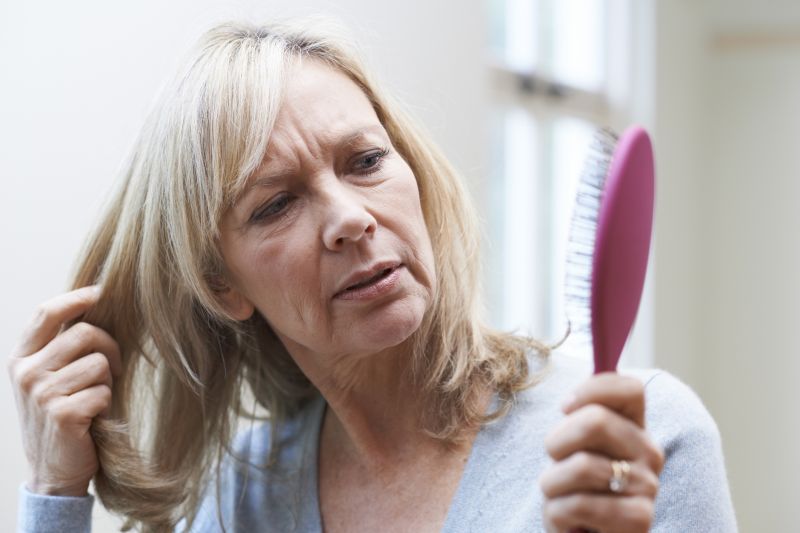
As people age, the hair growth cycle may slow down, and hair strands can become finer. This age-related hair thinning is a natural part of the aging process and is more noticeable in some individuals than others.
Cause #4: Medical Conditions
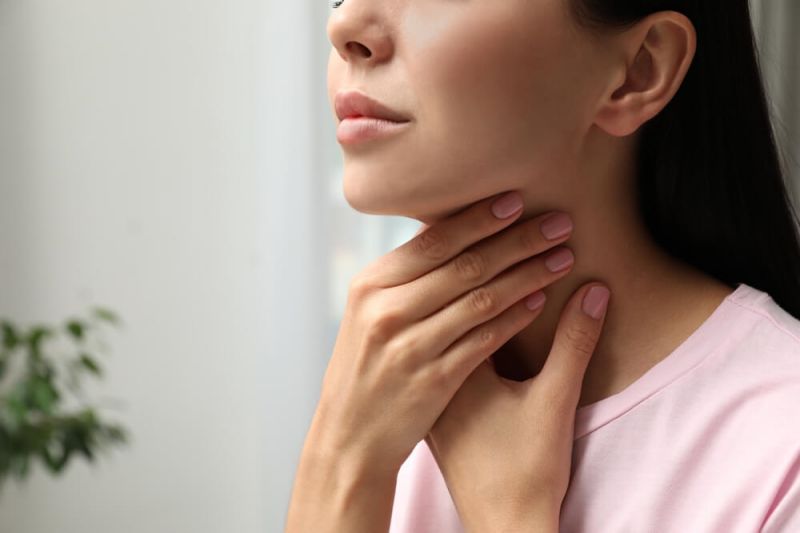
Several medical conditions can lead to hair thinning. Thyroid disorders, particularly hypothyroidism (an underactive thyroid) and hyperthyroidism (an overactive thyroid), can disrupt the hair growth cycle and cause hair loss. Autoimmune conditions, such as alopecia areata, cause the body's immune system to attack hair follicles, resulting in patchy hair loss.
Cause #5: Stress

Intense physical or emotional stress can lead to a temporary hair shedding condition called telogen effluvium. Stress can push hair follicles into the resting phase prematurely, causing more hair to shed than usual. Once the underlying stress is resolved, hair growth typically returns to normal.
Cause #6: Nutritional Deficiencies

Proper nutrition is essential for healthy hair growth. Inadequate intake of essential nutrients, such as iron, zinc, biotin, and protein, can lead to hair thinning. Diets lacking in these nutrients can affect the hair's structure and growth cycle.
Cause #7: Overstyling and Heat Damage
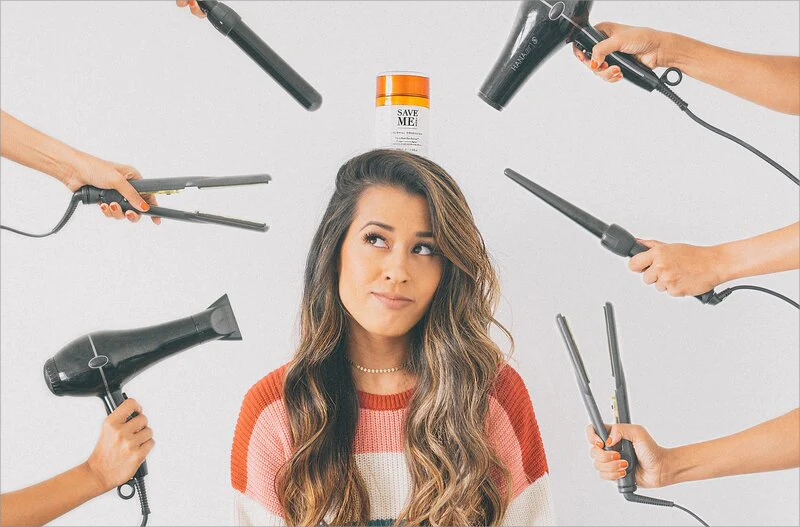
Frequent use of heat styling tools (e.g., blow dryers, curling irons) and hairstyles that put tension on the hair (e.g., tight braids, ponytails) can lead to hair breakage and thinning. Additionally, chemical treatments like hair dyes, relaxers, and perms can weaken the hair shaft and contribute to thinning.
Cause #8: Medications
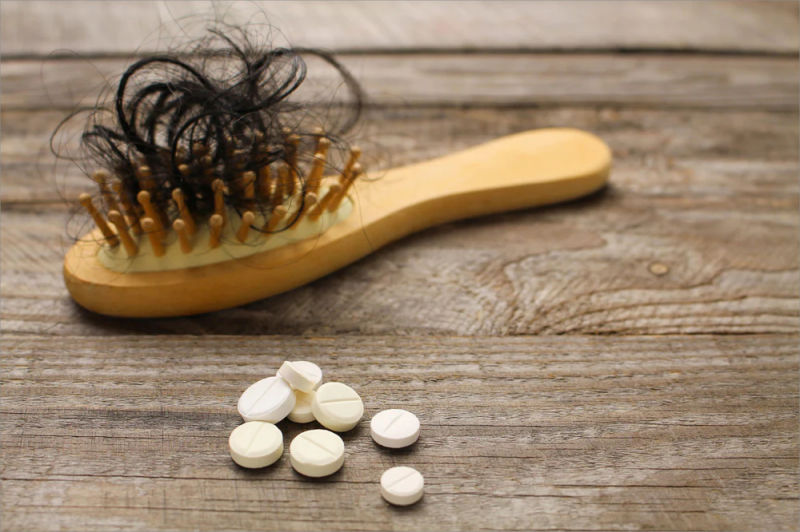
Certain medications can have hair thinning as a side effect. Drugs like some antidepressants, blood thinners, anticonvulsants, and chemotherapy agents can cause hair loss in some individuals.
Cause #9: Weight Loss or Crash Dieting
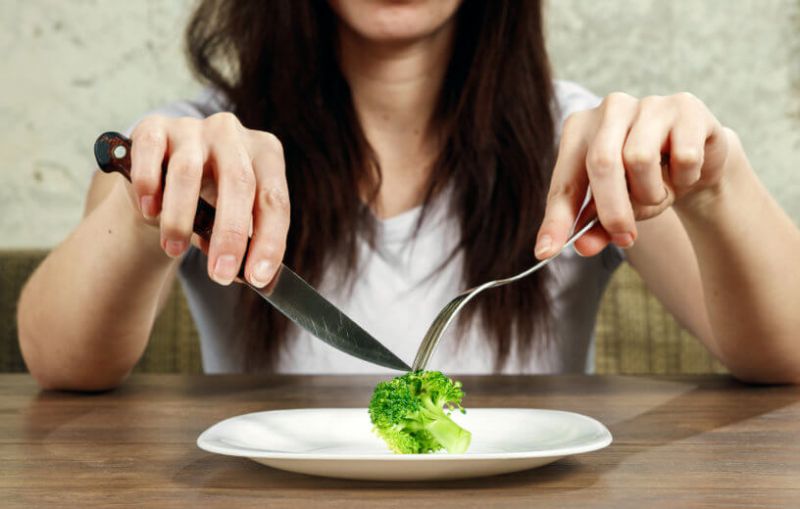
Rapid and significant weight loss, especially through crash dieting or severe calorie restriction, can lead to nutritional deficiencies that affect hair health and cause temporary hair thinning.
Cause #10: Environmental Factors

Exposure to environmental pollutants, excessive UV radiation, and harsh weather conditions can weaken the hair and negatively impact its health, leading to thinning.
It's important to remember that hair thinning can have complex causes, and sometimes, multiple factors may contribute to the issue.
Related: Hair Loss In Women: What Causes It And How To Solve It
Hair Damage: What Causes It And How To Deal With It
How to Boost Hair Growth for Thinning Hair?
Boosting hair growth for thinning hair requires a comprehensive approach that addresses the underlying causes and promotes a healthy scalp and hair environment. Here are some tips and strategies to help stimulate hair growth.
Strategy #1: Adopting a Healthy Lifestyle for Hair Growth

Adopting a healthy lifestyle can positively impact your hair growth. Here are some tips to promote healthy hair growth:
► Balanced Diet for Hair Health
Protein. Hair is made of protein, so eating enough protein-rich foods helps hair grow strong.
Iron. Iron is vital for healthy hair follicles and preventing hair loss. Eat iron-rich foods like meat and leafy greens.
Biotin (Vitamin B7). Biotin supports hair thickness and strength. Get it from eggs, nuts, and sweet potatoes.
Vitamin C. Protects hair follicles and helps absorb iron. Find it in citrus fruits and vegetables.
Vitamin A. Keeps the scalp healthy by producing sebum. Eat carrots, spinach, and kale.
Omega-3 Fatty Acids. Nourish hair follicles and support a healthy scalp. Found in fish, flaxseeds, and walnuts.
Vitamin E. Protects hair from damage and improves blood circulation. Get it from nuts and spinach.
Vitamin D. Essential for hair follicle cycling and growth. Get sunlight or consume fortified foods.
Stay Hydrated. Drinking water keeps the scalp and hair hydrated for healthy growth.
► Regular Exercise and Stress Management
Cardiovascular Exercise. Activities like jogging, brisk walking, cycling, or dancing improve blood circulation, delivering nutrients to the scalp and promoting healthy hair growth.
Yoga. Poses like the downward-facing dog and headstand improve blood flow to the scalp, nourishing hair follicles.
Meditation. Practice mindfulness and meditation to reduce stress hormones like cortisol and promote relaxation.
Deep Breathing. Perform deep breathing exercises to calm the nervous system and reduce stress levels.
Time Management. Organize your tasks to reduce stress caused by feeling overwhelmed.
Strategy #2: Hair Care Habits for Thinning Hair
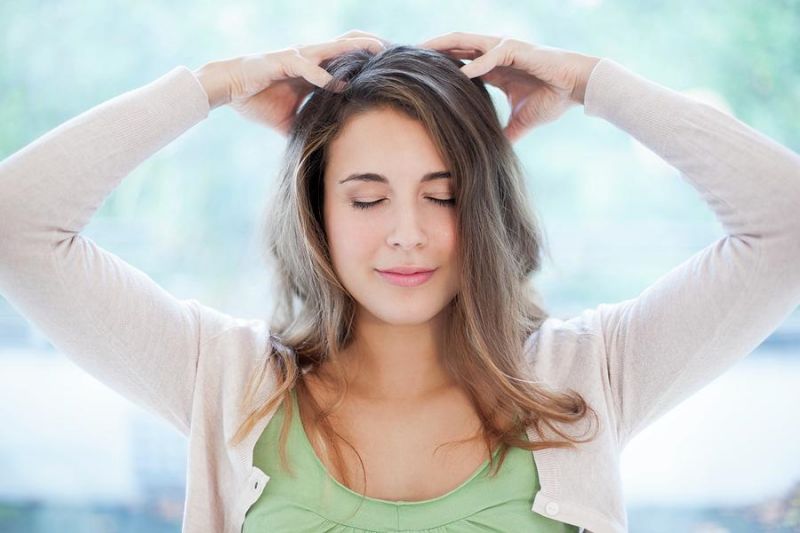
Good hair care habits are essential for maintaining healthy hair and a balanced scalp. Here are some tips for hair care:
Use Sulfate-Free Shampoo. Choose a mild shampoo that is free from sulfates and harsh chemicals.
Wash Hair with Lukewarm Water. Avoid using hot water to wash your hair, as it can dry out the scalp and hair. Opt for lukewarm water instead, which helps retain natural moisture.
Massage Gently. While shampooing, use your fingertips to massage the scalp gently. Avoid using your nails, as it may irritate the scalp.
Don't Over-Wash. Washing your hair too frequently can strip away its natural oils, leading to dryness. Aim for washing every 2-3 days or as needed.
Condition Properly. Apply conditioner primarily to the lengths and ends of your hair. Avoid applying conditioner to the scalp to prevent product buildup.
Rinse Thoroughly. Make sure to rinse your hair thoroughly to remove all traces of shampoo and conditioner.
Pat Dry. Gently pat your hair with a soft towel to remove excess water. Avoid rubbing vigorously, as wet hair is more prone to damage.
Use a Wide-Tooth Comb. Use a wide-tooth comb to detangle your hair. Start from the ends and work your way up to avoid unnecessary pulling.
Protect Hair While Sleeping. Use a silk or satin sleep cap to reduce friction and minimize hair breakage while you sleep.
Avoid Tight Hairstyles After Washing. Allow your hair to air dry or use a gentle blow dryer on a low heat setting. Avoid tying your hair tightly when it's wet, as it may cause breakage.
Strategy #3: Styling Tips for Fuller-Looking Hair

Everyone's hair is different, so experiment with different haircuts and styling techniques to find what works best for your hair type and desired look. Here are some tricks:
► Proper Haircuts and Styles
Layered Haircut. Layers can add texture and volume to your hair, making it appear fuller and more dynamic.
Shorter Hairstyles. Shorter haircuts, like a pixie cut or a bob, can give the appearance of thicker hair, as longer hair tends to weigh down and look thinner.
Side Swept Bangs. Side swept bangs can add volume around the face and make the hair look fuller.
Textured Hairstyles. Textured hairstyles, such as beach waves or curls, add body and volume, creating the illusion of thicker hair.
Related: Hair Inspo Alert: 40 Refreshing Summer Haircuts To Try In 2023
► Volumizing Techniques and Products
Volumizing Products. Use volumizing shampoos, conditioners, and styling products designed to lift the roots and add thickness to the hair.
Blow-Drying Techniques. Blow-dry your hair upside down or use a round brush to lift the roots while blow-drying, creating more volume.
Teasing or Backcombing. Lightly tease the hair at the crown to add volume, but be gentle to avoid damaging the hair.
Avoid Heavy Products. Heavy products can weigh down your hair, so opt for lightweight styling products that add volume without causing buildup.
Embrace Natural Texture. Work with your hair's natural texture, as it can provide more volume and movement.
Related: How To Style Your Wig Like A Pro: Step-By-Step Tutorials
Strategy #4: Natural Remedies for Thinning Hair
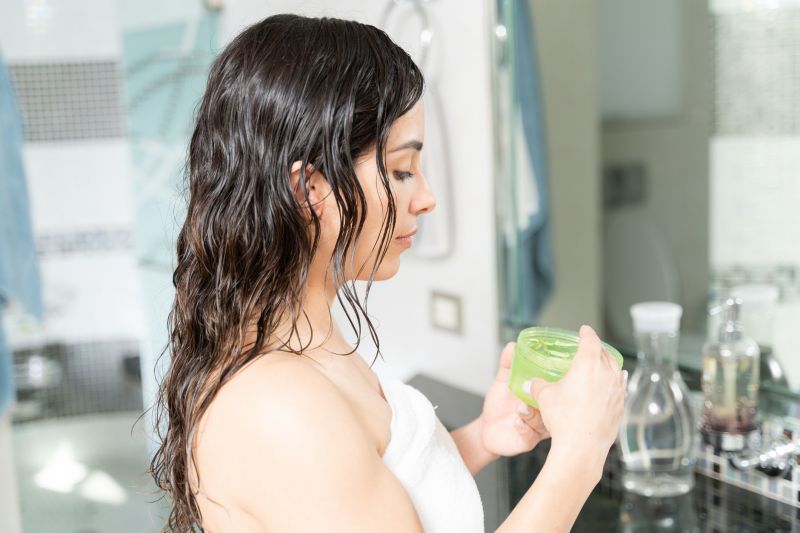
While there is no guaranteed natural remedy for thinning hair, some remedies and lifestyle changes may help promote hair health. Here are a few suggestions:
► Aloe Vera for Hair Growth
Aloe vera can promote hair growth and improve scalp health. It soothes the scalp, reduces inflammation, and strengthens hair follicles. Aloe vera also acts as a conditioner, keeping hair hydrated and less prone to breakage. You can apply pure aloe vera gel to the scalp or mix it with coconut or olive oil for a hair mask. Remember to perform a patch test for allergies before use.
► Essential Oils for Hair Growth
Essential oils like rosemary, lavender, peppermint, cedarwood, thyme, tea tree, ylang-ylang, clary sage, and jasmine can promote hair growth and improve scalp health. Dilute them with carrier oils like coconut or jojoba before use. Apply the blend to your scalp through gentle massage or mix a few drops with your shampoo or conditioner.
► Onion Juice for Hair Growth
The sulfur compounds in onions might be beneficial for the scalp and hair follicles, but more research is needed. If you want to try onion juice for hair growth, extract the juice from onions and apply it to your scalp. Leave it on for at least 15 minutes before rinsing it off. However, onion juice may cause skin irritation or allergies, so do a patch test first.
Strategy #5: Advanced Treatments for Thinning Hair
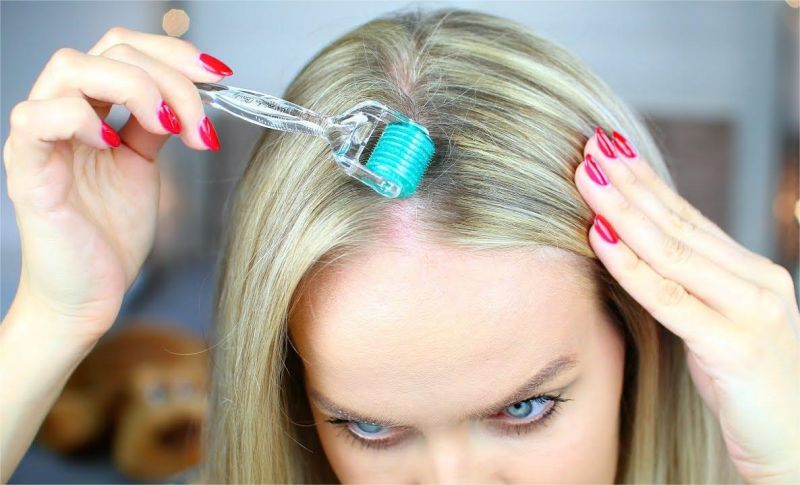
Advanced treatments for thinning hair include various medical and cosmetic procedures that aim to promote hair growth and improve hair density. Some of these treatments include:
► Over-the-Counter Solutions and Supplements
Minoxidil. Available as a topical solution or foam, minoxidil is an FDA-approved medication that can stimulate hair growth and slow down hair loss.
Caffeine-Infused Shampoos. Caffeine is believed to promote hair growth by stimulating hair follicles and improving blood circulation in the scalp.
Saw Palmetto. It is a herbal supplement that is believed by some to inhibit hormone-related hair loss.
Keratin-Based Products. Products containing keratin can help strengthen the hair and reduce breakage, promoting the appearance of thicker hair.
► Professional Treatments and Therapies
Professional treatments and therapies for hair growth include PRP therapy, low-level laser therapy, hair transplantation, mesotherapy, scalp microneedling, laser comb or cap therapy, prescription medications, hormone therapy, hair growth peptides, and oxygen therapy. Consult with a dermatologist or specialist to determine the best option for your specific hair loss condition.
Strategy #6: Maintaining Healthy Habits for Ongoing Hair Growth
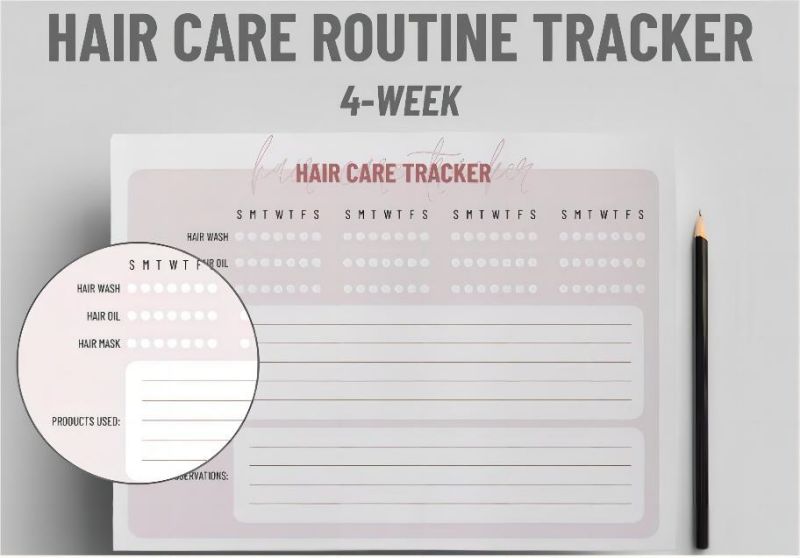
Consistency and patience are integral when promoting natural hair growth. Here are some tips to help you maintain healthy hair and support its growth:
► Consistency in Care and Patience
Limit Heat Styling. Reduce the use of heat-styling tools like straighteners, curling irons, and blow dryers.
Trim Regularly. Schedule regular hair trims every 6-8 weeks to get rid of split ends and maintain healthy-looking hair.
Protect from UV Rays. Shield your hair from the damaging effects of the sun by wearing a hat or using UV protection sprays.
Protect Hair During Exercise. If you exercise frequently, tie your hair up in a loose, non-pulling hairstyle.
Invest in Silk or Satin Hair Accessories. Use silk or satin scrunchies and hair ties to minimize hair breakage and reduce friction.
Be Patient with Hair Growth. Be patient and consistent with your hair care routine to see results.
► Tracking Hair Care Progress
To effectively track and improve your hair's condition, follow these steps:
Note your hair's current state, including texture and concerns.
Set clear goals for your hair care routine, such as improving overall health or addressing specific issues.
Choose measurable metrics like length or moisture levels to track progress.
Keep a record of the products, frequency, and techniques you use in your routine.
Regularly compare and evaluate progress based on your initial assessment and selected metrics.
Related: How To Create The Flawless Hair Care Regimen For Your Hair Type?
Strategy #7: Investing in Hair Hacks

Investing in hair hacks can be a great solution for individuals experiencing thinning hair. Here are some recommendations:
► Gaining Access to Wigs
Wigs offer a natural appearance, allowing individuals to achieve a full and voluminous look that boosts their confidence. 100% Human Hair Wigs are the best quality wigs available. They are versatile, offering the opportunity to experiment with different styles and colors without commitment or damage to natural hair. Wearing a wig is convenient, requiring minimal time and effort to style compared to natural hair. It also provides protection for existing hair and allows it to grow without interference from external factors. You can consult an expert to help you choose a wig.
Related: How To Choose Your First Human Hair Wig?
What Is The Best Wig For Baldness & Thinning Hair?
► Considering hair toppers
Hair toppers provide instant volume and coverage, blending seamlessly with your natural hair for a natural-looking result. They also offer versatility in styling, allowing you to cut, and color them just like your own hair. There are types of lace, silk and monofilament bases. By concealing thinning areas and restoring the appearance of fuller hair, they boost confidence and help individuals feel more comfortable in social settings. Consulting with a hairstylist or wig specialist will ensure you find the perfect hair topper that matches your natural hair color, size, and style.
Related: What Makes Hair Toppers The Wonderful Choice For Thinning Hair?
From Clip-Ins To Integration: A Comprehensive Guide To Different Types Of Hair Toppers
Strategy #8: Engaging with the Community

Finding a good hair community and reliable information can make all the difference in a journey with hair thinning. By sharing information, tips, and resources, the community offers practical guidance for managing thinning hair and exploring treatment options. Interacting with individuals who have embraced their appearance despite hair loss can inspire and motivate individuals to take positive steps towards addressing their own concerns. Follow@Wigshe, where you will find information, personal stories, and products to help you through the difficult times. We talk about Everything Alopecia, Coping with Thinning Hair, Hair Loss, the Best Wigs and Hair Replacement Systems. We hope you are inspired.
Related: Welcome To The Hair Loss Community—A Warm And Inviting Family
Final Thoughts
Congratulations, you're now armed with the secrets to bid adieu to thinning hair and embrace a voluminous mane! Remember, patience and consistency are key as you journey towards your hair goals. Don't forget to share the laughter and tips with your loved ones along the way. Now go, conquer the world with your fabulous hair! Keep smiling and combing through life with grace and sass - your hair will thank you! Until next time, happy hair days ahead!
Images credit: Google, Pinterest, YouTube.
